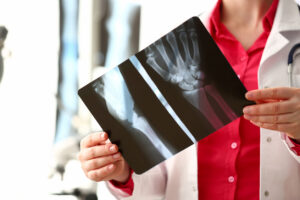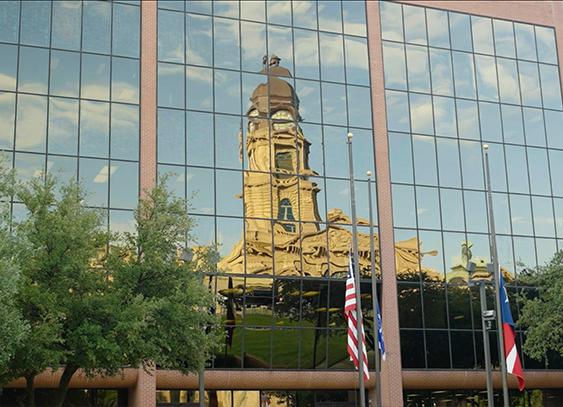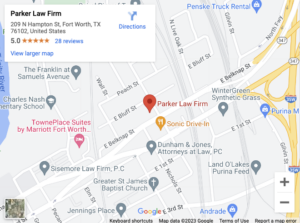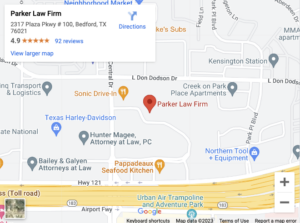
Your bones can fracture under traumatic forces. Depending on the bone, you could even suffer a fracture in a minor accident. For example, a dog bite could snap a small bone in your finger.
Simple bone fractures take six to eight weeks to heal. Afterward, you may need physical therapy for weeks to months. Serious fractures, like shattered bones, can take your body more than a year to repair.
The Anatomy of Your Skeleton

Your musculoskeletal system includes bones (comprising the skeleton) and soft tissues.
The skeleton acts as scaffolding for your body, holding it up and giving it structure.
The soft tissues — such as the cartilage, ligaments, tendons, and muscles — perform many functions in your body, including:
- Moving your body
- Giving your body its strength
- Holding your bones together
Bones differ from soft tissues in structure. Thanks to minerals like calcium and phosphorus, they’re rigid, while soft tissues are flexible. Bone cells incorporate these minerals into a lattice structure, which is strong and rigid but also light because it is not solid.
Bone cells, like all cells in your body, are alive, and they need a steady blood supply for cell metabolism. Blood vessels run through the channels in the lattice structure, carrying oxygen to the bone cells via the blood.
Bone marrow sits in the center of most of your large bones and produces new blood cells, including red cells, white cells, and platelets. New blood cells formed in the bone marrow replace old cells, which get filtered out of your circulatory system by the spleen.
Bones meet at joints, where ligaments hold the bones together to prevent them from dislocating. They also guide the motion of the bones so they do not bend in the wrong direction.
How Trauma Can Break Bones
Broken bones can result from many types of trauma, including:
Blunt Force Trauma
You can break a bone when you are struck by a blunt object. The impact causes the bone to crack, and once a bone cracks, it can break completely.
For example, you can break your kneecap when you trip and strike your knee on the ground. You can also suffer a blunt impact in a car accident.
Bending Trauma
If your body gets caught in something, you can be forced to bend in unnatural ways. Your bones will allow for some flexibility, but if they bend too far, they will break. This type of trauma can happen in work accidents. For example, your hand could get caught in a machine, which can pull and bend your arm until it snaps.
These injuries can also happen in car accidents, such as when the impact bends the door into the passenger compartment. Your arm or leg could get trapped during the crash, leading to a break.
Crushing Trauma
Crushing injuries happen when immense pressure is applied to your body. This could happen quickly when something falls onto you, but it could also happen slowly when you get squeezed.
For example, you might suffer broken bones due to crushing trauma in a motorcycle accident when your motorcycle falls onto your leg in a motorcycle accident. The car that hit your motorcycle could also cause crushing trauma when it runs over your arm after you fall to the ground.
Twisting Trauma
Twisting forces often happen when your body bends and turns under force. These forces can cause your bones to splinter and break.
For example, a truck accident could crush your car and trap your legs. As your body whips around in the crash, your trapped legs could get twisted and broken.
Types of Broken Bones
Doctors have a few ways to classify broken bones, which can inform the treatment and prognosis for your broken bones.
Questions doctors ask when classifying fractures include:
Is the Bone Aligned?
If the bone remains aligned after the break, doctors classify it as non-displaced. When the broken ends move out of alignment, doctors consider it displaced.
Displaced bones require realignment to heal properly. Doctors can sometimes manipulate them by pulling and turning them until they align, but in many cases, your doctor will need to perform surgery to access the broken bone. During the operation, the doctor will realign the bone and secure it with plates and screws.
Was the Skin Broken?
If a broken bone displaces far enough, it can pierce the skin. If you can see the bone protruding through the skin, you have an open fracture. Doctors also call this type of injury a compound fracture. If the skin remains intact, it’s called a closed fracture.
You may experience severe bleeding from an open fracture. And since the wound was exposed to potential contaminants of the open air and debris, you can experience infections.
What Is the Shape of the Fracture?
Doctors use the shape of the fracture to classify it. Some common types include:
- Simple transverse fractures across the long axis of the bone
- Spiral fractures from twisting trauma
- Avulsion fractures, with a broken chunk of bone attached to a ligament or tendon, pulled from a larger bone
One of the most serious fractures is a comminuted fracture. Also called a shattered bone, comminuted fractures happen when a bone breaks into three or more pieces. These types of fractures require surgery to reconstruct the bone and take up to a year to heal.
What Compensation Can I Recover for Broken Bones?
You can get injury compensation when your bone fracture results from someone else’s actions. The compensation you can seek covers both your economic and non-economic losses. Your economic losses include your medical costs and lost income, whereas your non-economic losses include your pain, mental anguish, and disability.
Contact An Experienced Texas Personal Injury Lawyer to Schedule a Free Consultation
Broken bones can immobilize you and prevent you from working or performing essential tasks like dressing and cooking. Contact Parker Law Firm Injury Lawyers for a free consultation to discuss your broken bones and the injury compensation you can pursue for them.


